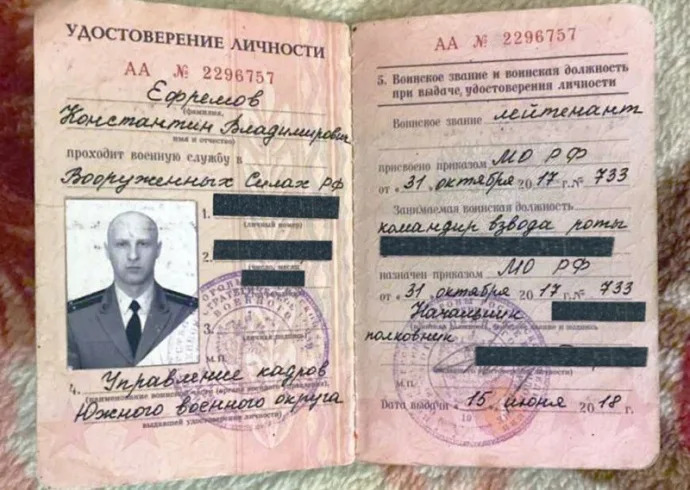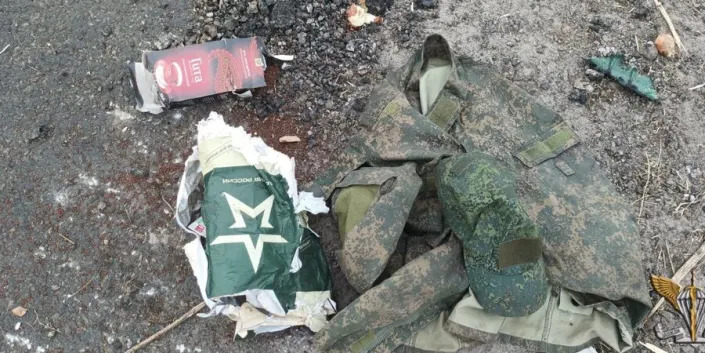USA Today
As suicide rate keeps rising in Wisconsin, concentration in rural areas raises alarm
Natalie Eilbert – February 2, 2023
If you or someone you know is dealing with suicidal thoughts, call the National Suicide Prevention Lifeline at 988 or text “Hopeline” to the National Crisis Text Line at 741-741.
Karen Endres knows that farming involves stress unlike other occupations.
Its main variables — weather, livestock, crops, sales — are largely beyond control. Physical demands and time commitment never ease. Family relationships, management practices and work-life balance all overlap. In how many jobs, after all, might three generations of a family work, live and plan for the future together?
And if that business isn’t going well, who do they talk to?
“We don’t have a community to connect with others about mental health and stressors,” said Endres, who operates a dairy farm with her husband, and works as the farmer wellness coordinator at Wisconsin Farm Center’s Farmer Wellness Program, part of the state Department of Agriculture, Trade and Consumer Protection. “It can lead us to very dangerous places.”
The most recent Suicide in Wisconsin report shows a 32% increase in suicides in Wisconsin from 2000 to 2020. Suicide is now the state’s 10th leading cause of death. Over the last three years combined, suicide rates were higher among rural residents than among urban residents. And overwhelmingly, the suicides were among men.
Some rural counties dwarf the state suicide rate.
According to the Wisconsin Violent Deaths Reporting System, Milwaukee County’s rate of suicide deaths was about 12 per every 100,000 people in 2018, the most recent year of comprehensive reporting. Nearly 300 miles north in Ashland County, the rate of suicide deaths was about 25 per every 100,000. Milwaukee County has a population of nearly 930,000. Ashland’s population: About 16,000.
“North of Green Bay, the population is very sparse and resources are very sparse. You have a high proportion of veterans living in those counties, higher proportions of firearm ownership in those counties, and so there’s just a number of factors that play into that,” said Sara Kohlbeck, an assistant professor in the Department of Psychiatry at the Medical College of Wisconsin.
Kohlbeck conducts research in suicide and suicide prevention across different communities in Wisconsin. In 14 years, Kohlbeck has analyzed the deaths of nearly 200 Wisconsin farmers who died by suicide.
One farmer ended his life the day after receiving a change of address card in the mail from his wife, who’d recently left him. Another died a week after being “disgusted” over not being able to cut his own toenails, a result of new physical limitations. Yet another had just finished a phone call with a loan company. Another had a disappointing crop, the latest in a string of bad years. Still, others had blood alcohol content many, many times the legal limit.
Over 70% of farmer suicides involved firearms.
Kohlbeck and her team divided the hardships faced by farmers into five categories: acute interpersonal loss (a wife leaving), rugged individualism (a man facing new limitations), financial stress (a phone call from a loan company), the pressure of providing (struggling with the crops) and the lethal combination of alcohol and firearms.
“They’re just in an untenable scenario of inescapable pain,” Kohlbeck said. “Physical health issues, substance abuse, not having access to care, not being able to put food on the table — a lot of what I see is basic needs-related issues … that lead them to wanting to escape the situation they’re in.”
Chris Frakes is the group director of the Southwestern Wisconsin Community Action Program, an anti-poverty agency. Every three years, it does a community needs assessment for the five counties it oversees. In 2017, Frakes had heard so many stories of farmers struggling to get by, she expected them to reach out for help. But few did.
The silence and the growing farm crisis led to the program getting creative about upstream prevention. In 2021, it received nearly $1 million from the Wisconsin Partnership Program at the University of Wisconsin School of Medicine and Public Health to target farmers’ mental health over a five-year period.
But Frakes is the first to admit that assessing the needs of farmers involves face-to-face interactions, ability to crack coded language and, above all things, development of trust. To do so requires people to understand the culture.
“We’re trying to really empower community members to not only recognize when somebody’s in a crisis, or when somebody’s struggling with thoughts of suicide but also to notice when somebody’s really stressed or struggling,” Frakes said.

Domino effects of self-blame in farmer culture
Brenda Statz, a cattle farmer in Loganville, lost her husband to suicide in 2018. Leon Statz had struggled with depression, and four months to the day after he made the decision to sell his dairy cows, he was rushed to the hospital following an overdose. It was his first suicide attempt.
But Statz found it hard to talk about his mental health. Instead, he talked about the torrential rainfall at the end of 2016 and throughout 2017 that left his hay perpetually damp. He talked about crops growing moldy, cows getting sick from mycotoxins in their feed, vet bills shooting through the roof, tractors running aground in the mud. He talked about corn left unharvested.
Something that will always stay with Brenda Statz is a conversation she had with a psychiatrist in Iowa who told her farmers are a specific breed of people who will “always find a way to blame themselves.” If milk price falls, they’ll berate themselves for not forward contracting. If the rainfall ruins the hay, they should have cut the hay earlier.
“They will always turn it around that it’s their fault that they did something wrong — whether this stuff is totally out of their control, they will still find a way to say they did something wrong, that they should have been paying attention,” Statz said. “That’s farming.”
Kohlbeck’s studies suggest that fewer than half of the people who die by suicide have a diagnosed mental health condition. In connection with self-blame and lost control, what has jumped out to her is a sense of having lost usefulness.
“When a farmer is stymied by physical health issues, an ability to care for the farm and for those relying on them is compromised—in fact, they may see themselves as ‘no good.’ Their identity as a strong, physically able hard worker may be shaken,” Kohlbeck wrote in a study published by The Journal of Rural Health.
Lethal combinations of firearms and substances
What makes Wisconsin’s farmer suicides stand out isn’t the number of deaths the state sees every year; those numbers are proportionate across Midwestern farmlands. It’s the fact that Wisconsin holds the troubling distinction of more binge drinkers than any other state in the United States, with 23.5% of its adult population drinking excessively, according to the Centers for Disease Control and Prevention.
“There’s a higher number of suicides here because we have three things: We’re readily accessible to guns, firearms, because people hunt; you can isolate out on your farm very easy and you don’t ever have to leave the farm; and another thing is, as a state, we’re known for drinking,” said Brenda Statz. “So, you mix those three things together and it could spell disaster for some.”

Kohlbeck noted that nearly 20% of the farmers who used a firearm in their suicides also had alcohol in their systems at the time of their death.
Statz knows all too well that farmers won’t go to doctors, even if they need to, partly because they’re “fixers, even when everything’s going wrong,” and partly because, she said, even if they’re on death’s door, “there’s always work to do on the farm,” she said.
“Many individuals use alcohol as a means for coping with the stress they encounter in their daily life,” Kohlbeck said. “And, unfortunately, alcohol alters your decision-making when you’re in a crisis.”
Self-medicating with alcohol and opioids, Endres said, is a big problem. Frakes, from Southwestern Wisconsin Community Action Program, said farmers keep what she calls a “rainy day” stock of opioids from previous injuries. At a time when opioids are reaching historic levels in the state, especially in rural areas, the combination leads to catastrophic outcomes for farmers, Frakes said.
In less than a decade, overdose deaths in Wisconsin have more than doubled, from 628 in 2014 to 1,427 in 2021, according to the state Department of Health Services. Hospitalizations for overdoses are rising as well, from 1,489 hospital visits in 2014 to 3,133 in 2021. It’s suspected that, in 2022, 8,622 ambulance runs within Wisconsin were the result of opioid overdose cases.
Largely rural counties — Menominee, Ashland, Forest, Douglas, Jackson and La Crosse counties — had suspected rates of opioid overdoses that far exceeded the state average, sometimes 100 times the state rate. Further, both deaths and misuse of opioids are higher in Wisconsin than the national average.
Finding a trustworthy doctor is a challenge
Since she lost her husband to suicide, Statz travels to churches across the state to promote mental health in farmers as part of her work with the Farmer Angel Network, a project out of the Wisconsin Farm Bureau Federation.
Part of the mindset for farmers is to work hard and work constantly. Farmers aren’t the type to ask for — or able to take even if they want it — time off and, instead, see it as a success when somebody works years without a break.

When she spoke as a representative of Farmer Angel Network with Reedsburg Area Medical Center, Statz explained to the staff there that farmers come to counseling because their spouses have “nagged them” or they’ve run out of other options.
That doesn’t mean they’re ready to talk, though.
“He’s going to come in your office and he’s going to talk about the weather, he’s going to talk about his dog, he’s going to talk about everything, except why he’s there,” Statz said. “You’re going need a little more time when a farmer comes in. They’re going to not be upfront right away, because they’re still checking you out to see how much they can trust you.”
Many farmers use small talk to gain trust, Frakes said. And they’re not prone to come out and say they’re struggling. Farmers can shoo terms like anxiety and depression away like flies, but when they start to talk about issues like crops failing, that’s the time to start paying attention, she said. Crop failure can mean livestock feed is short for the winter, which can interfere with farm operations.
“Instead of asking if a farmer is depressed, it’s better to ask them what’s keeping them up at night. Asking a slightly different set of questions to try and get at what’s really happening, plus small talk, is a way to build trust,” Frakes said.
The lack of access to counseling services — and an evergreen reluctance to seek care — means when a farmer does feel mental distress, it’s usually already an emergency. And for 21 Wisconsin counties, the closest option for residential crisis stabilization involves a trip across county lines.
Statz’s husband Leon attempted suicide three times in 2018. After Leon’s first attempt on April 21, it would be another six weeks before he could see a counselor. His second attempt happened in July.
He was dead by October.
Resources for farmers
- Wisconsin Farm Center has a toll-free, 24/7 farmer wellness line for anyone experiencing depression or anxiety, or who just needs to talk, at (888) 901-2558.
- The Farmer Wellness Program offers weekly support groups for farmers and farmer couples to share challenges and offer encouragement, comfort, and advice nine months out of the year (except between July and September). Zoom meetings take place either on the first Monday or the first Tuesday of every month at 8 p.m.
- The Farmer Angel Network provides its members with access to mental health resources through educational programs, informational flyers and trained personnel. Summer months include all-expense paid ice cream socials, kid-friendly drive-in movies and more for over 50 farm families to enjoy a night off.
- Farm Well Wisconsin partners with local experts to build on and connect existing community resources, gives community leaders the tools they need to support and intervene in crises, and improves knowledge of health providers serving rural populations.
- Wisconsin Farmers Union is a member-driven organization committed to enhancing the quality of life for family farmers, rural communities and all people through educational opportunities, cooperative endeavors and civic engagement.
More: One mom’s journey: The (lack of) paint on the walls colors the stigma surrounding mental health
Natalie Eilbert covers mental health issues for USA TODAY NETWORK-Central Wisconsin. She welcomes story tips and feedback.








